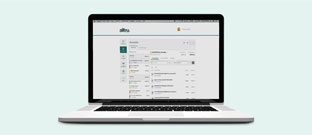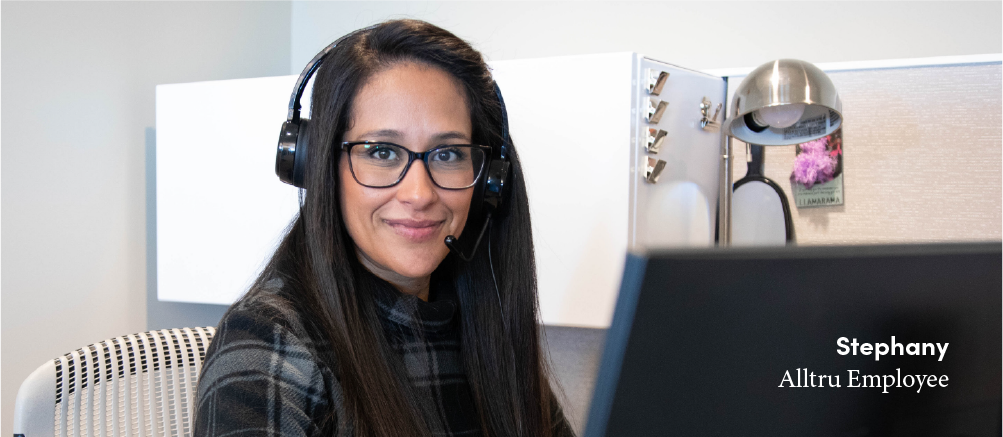According to Business Insider, the average American is over $104,000 in debt. To some, this number gives a sense of relief. You aren’t in as much debt as the average. “Phew!” To others, this number is an eye-opening realization. “The average American only has $104,00 in debt?” No matter how much debt you have, the reality is the same for all of us. You owe someone some amount of money. Maybe the next question to ask yourself is, “How can I start paying off debt?”
Paying off debt can be intimidating, especially when you have a large amount to pay off. With so many different options out there, how do you know which method you should follow? We’re here to help you figure that out.
Before we jump into methods for paying off debt, we need to discuss the different types of debt. Some scenarios have aspects about them that might influence how you want to tackle paying off your debt.
First, let’s discuss credit cards. When you use a credit card, you’re basically borrowing money from a credit card company to make a purchase. Then, you receive a monthly bill for the total amount that your borrowed. If you do not pay the balance in full after the first month, whatever you didn’t pay will be on the next month’s bill plus interest. Interest rates vary from credit card to credit card. The interest rate can even change after a few months. Take a look at your interest rate to find out how much extra you are paying because you didn’t pay your balance in full the previous month.
Auto loans are taken out with a financial institution or the car dealership itself. When you buy a car with an auto loan, you agree to a loan term and set interest rate. Many other loans, such as home improvement loans and personal loans, function in a similar way. If you make the minimum monthly payments each month, you are well on track to paying off the debt from your loan.
For many, a mortgage is the largest loan they ever take. Because mortgage terms are so long and for a large amount of money, lenders conduct a hard credit check that looks at you debt-to-income ratio, credit score, and more aspects about your finances to determine if you will be approved for a mortgage and what interest rate you will get for your mortgage. Fixed-rate mortgages have a constant interest rate that will never change over the life of your loan. Adjustable-rate mortgages sound just like their name. They start with one interest rate and then the rate changes after a few years. The new rate is determined by the current trend rates, which may or may not be in your favor.
With so many different types of loans and different due dates, it can feel like you’re paying a bill toward some type of debt once a week or event more. One way to manage debt is through debt consolidation. With debt consolidation, you end up with one larger loan payment to make once a month instead of several smaller payments during the month. If you’re finding it hard to pay bills because they’re due right before your next paycheck arrives, debt consolidation could be a great choice for you.
In addition, there are some lifestyle changes you need to make if you are serious about getting out of debt. While making lifestyle changes sounds dramatic, it could be what is necessary to get control of your debt and come out on top.
First, look into cutting expenses. You can easily track your spending with online banking from Alltru. You might find that you need to limit your eating out to twice a month instead of once a week, limit your going out with friends, or canceling subscriptions for a while.
Another tip is to sell what you don’t need. Facebook Marketplace, Poshmark, and other similar sites make it easy for you to sell what you don’t use to someone else. Local consignment shops like USA Resale and Uptown Cheapskate work in a similar way. Put this money toward your debt. You can try this a few times a year when you have time, which will give you spurts of extra cash instead of just $20 here and there. Plus, you’ll have less clutter in your house!
Let’s be real, paying off debt isn’t exactly fun. But putting a positive spin on the situation can help change your perspective. Think about the reward you are setting yourself up for aka living debt free! Present You is making sacrifices so Future You won’t have too. Your dining out nights become more special when you go out less. You can host a game night with friends at your house, which costs less than going out too. If you get a thrill from shopping, do someone else’s shopping! Spend a few hours picking up other people’s purchases through Uber Eats, and make some extra money while doing something you enjoy.
Another lifestyle change you’ll need to make is to stick to a budget. Creating a budget can seem daunting, so learn how to make one with our help. Following a budget helps keep you on track for making your monthly debt payments. Plus, it can keep you from going into more credit card debt in the process. If you stick with it, you’ll start climbing your way out of debt in no time.
You might be ready to take big steps to get out of debt. There are two common methods you can follow to pay off your debt – the Snowball method and the Avalanche method.
The Snowball method starts with you making the minimum monthly payment toward each of your loan amounts. To start, you’ll put all your debts in order from smallest balance to largest, ignoring the interest rates. With any extra money you have from your budget, you’ll use this money to pay extra toward the smallest debt. Once the smallest debt is paid in full, put the money you were paying toward the small debt and add it to the monthly payments for the next smallest debt. Keep repeating this process until you have one debt left and finally pay it off.
If this method sounds familiar, that’s likely because you’ve heard a clip or two from The Ramsey Show. While there are other dramatic elements he suggests, we’re going to focus on the large strategies.
The next method is the opposite of the Snowball method. With the Avalanche method, you start with lining up your debts in order from largest interest rate to smallest. Then, you make the minimum monthly payments toward all of them except for the first one with the largest interest rate. You’ll put your extra money toward this one. After you pay off this balance, you put the money you were paying toward it toward the next debt with the new largest interest rate. Keep repeating this process until you pay off the last debt.
There are pros and cons to each method. A pro of the Snowball method is that you will start to see small wins sooner which will help keep you motivated. A pro of the Avalanche method is that since you are paying off the amount with the largest interest rate first, you could pay less in interest overall.
A con of the Snowball method is that you might end up paying more in interest each month because in your scenario, that might be the balance that you tackle last. A con of the Avalanche method is that you may not see one debt entirely disappear for a while, so you might have a hard time staying motivated.
To determine which method is the best for you, take a hard look at your different loans and their interest rates and balances. Start doing the math and determine which one better suits your motivation and financial situation.
Something else to note, if you decided to use a personal loan to consolidate your loans into one, larger loan, keep throwing extra money at this balance to pay it off faster. Any dollar extra that you pay toward your loans will go to the principal and not the interest. This is true for each of these debt payment strategies.
While paying off debt takes time, the rewards of eliminating a loan over time can keep you going. Plus, with some simple lifestyle changes, you can have fun along the way. No matter where you are in your debt elimination journey, contact a financial advisor at Alltru when you need help.







